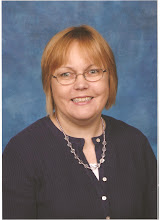I was placing a book on the librarians office cart to be re-cataloged when I saw the ISTE National Educational Technology Standards (NETS-S). Until I saw that folder, I did not that standards existed for technology in eaching. I have been in an education graduate program for3 years and this was the first I knew of the standards. I wondered how many teachers were aware of the NETS-S.
As I read through the six standards I sought examples of how the standards were implemented in the schools that I've observed and how the paradigm shift from web 1.0 to web 2.0 will assist teachers in upholding these standards. Please link to:
Standard #1 - Creativity and Innovation - Students are expected to apply existing knowledge to generate new ideas, products or processes, create original works, use models and simulations and identify trends and forecast possibilities. As a MSMC students we have been taught to do this with or without Web 2.0 tools. I am confident I will be able to ask students to create new projects, ideas, etc. They will have the CHOICE of using technology for some projects so all students can have tools that best illustrate their knowledge. I do not see much encouragement toward the higher order thinking illustrated in Howard Gardner's theory in the schools I have observed. The NYS tests and standards are often the primary focus and leave creativity and new ideas to th wayside.
Standard #2 - Communication and Collaboration I believe the Web 2.0 shift to world wide audience and collaboration will assist students to "interact, collaborate and publish with peers..." , (NETS-S, 2007) communicate use a variety of technologies solve problems and create new projects. The web 1.0 required lengthy personal or e-mail communications that were often cumbersome. I do not see teachers using this w.o feature for many school districts are afraid of litigation due to inappropriate contact with strangers, a valid fear. As a teacher, my hands would be tied in an environment such as this and this worries me.
Standard #3 - Research and Information Fluency Most students today are competent in locating, organize and using information. However, they are not able to evaluate, synthesize and many cannot process and report data. As a teacher, I would teach exact step-by-step strategies to help students look for key word and phrases. Web 1.0 is adequate for accessing information but web 2.0 allows students to ask questions, get answers and opinions from others, a valuable tool.
Standard #4 - Critical Thinking, Problem Solving, and Decision Making -As previously mentioned, I do not have much confidence in the critical thinking skills of today's students. I will explicitly teach strategies to thin this way an can see blogging, social bookmarking as a way to e3encourage them to see other points of view, and identify solutions and make informed decisions.
Standard #5 - Digital Citizenship - Ethical, legal and "responsible use of information and technology" (NETS-S, 2007) is taught on a limited scale in the classrooms I have seen. However, I believe it is paramount to staying safe and keeping the WWW safe and available for future generations. I believe school administrators will be helpful in helping me instruct our students so they are valuable users and participants in the Web 2.0 world.
Standard #6 - Technology Operations and Concepts As it stands right now, my students seems to understand "technology concepts, systems, and operations" (NETS-S, 2007). They are much more advanced than their teachers troubleshooting systems and applications and transferring "current knowledge to learning of new technologies". I will have to work on this and this class is just the beginning. I plan to continue learning about new web 2.0 tools and using them so I can use them (if available) in my future classroom.
Saturday, July 11, 2009
Subscribe to:
Post Comments (Atom)

No comments:
Post a Comment